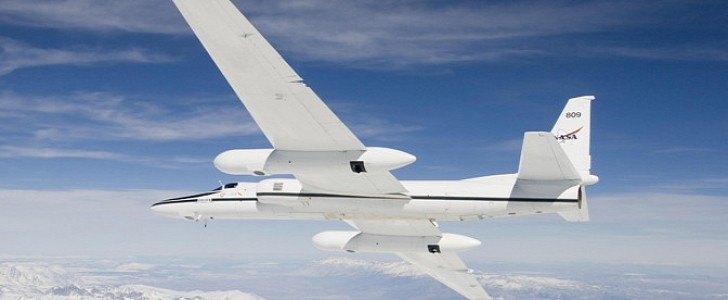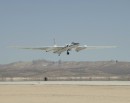Some people love them, others hate them, but beyond other personal preferences, summertime thunderstorms have a serious impact on climate change. In order to study that in depth, NASA is using its flying lab specifically designed to withstand long flights at high altitudes.
A different kind of flight operation is carried out these days over Kansas. The Wichita Eagle reports that a NASA team has been in Salina since the end of last month, launching flights regularly, every two to three days. This is part of the DCOTSS (Dynamics and Chemistry of the Summer Stratosphere) research project focusing on the relation between powerful thunderstorms and climate change.
NASA pilots are flying at 13 miles (20.9 km) above Kansas, which requires them to wear a full space suit and helmet, while flying in a pressurized environment. The aircraft that’s carrying out these research flights is NASA’s ER-2 (Earth Resources) flying laboratory. These two Lockheed airplanes were acquired back in 1981 and 1989 and have operated as high-altitude airborne science aircraft ever since.
The ER-2 can fly up to 70,000 feet (21,336 meters) which is twice as high as airliners, according to Kenneth Bowman, principal investigator and Texas A&M University atmospheric science professor. It can reach 65,000 feet (19,812 meters) in just 20 minutes and continue to fly at 410 knots (471 mph/759 kph).
For this particular study, the ER-2 flies for about eight hours each time it takes to the sky, while its scientific instruments are used to measure variables such as turbulence, particle number density, and particle size distribution.
Bowman explained that, while storms usually take part in the lowest part of the atmosphere, the intense ones can go up into the stratosphere, carrying high amounts of water and pollutants that end up contributing to the global warming.
NASA’s ER-2 will continue to collect data over the next three weeks, after which it will return to its base in Palmdale, California.
This is the second year of flights launched from Salina, for the DCOTSS, a collaboration between four NASA labs and 50 scientists from eight universities.
NASA pilots are flying at 13 miles (20.9 km) above Kansas, which requires them to wear a full space suit and helmet, while flying in a pressurized environment. The aircraft that’s carrying out these research flights is NASA’s ER-2 (Earth Resources) flying laboratory. These two Lockheed airplanes were acquired back in 1981 and 1989 and have operated as high-altitude airborne science aircraft ever since.
The ER-2 can fly up to 70,000 feet (21,336 meters) which is twice as high as airliners, according to Kenneth Bowman, principal investigator and Texas A&M University atmospheric science professor. It can reach 65,000 feet (19,812 meters) in just 20 minutes and continue to fly at 410 knots (471 mph/759 kph).
For this particular study, the ER-2 flies for about eight hours each time it takes to the sky, while its scientific instruments are used to measure variables such as turbulence, particle number density, and particle size distribution.
Bowman explained that, while storms usually take part in the lowest part of the atmosphere, the intense ones can go up into the stratosphere, carrying high amounts of water and pollutants that end up contributing to the global warming.
NASA’s ER-2 will continue to collect data over the next three weeks, after which it will return to its base in Palmdale, California.
This is the second year of flights launched from Salina, for the DCOTSS, a collaboration between four NASA labs and 50 scientists from eight universities.






